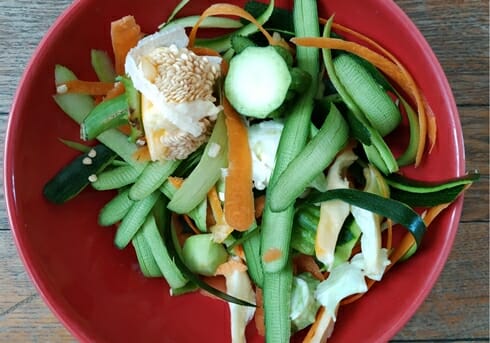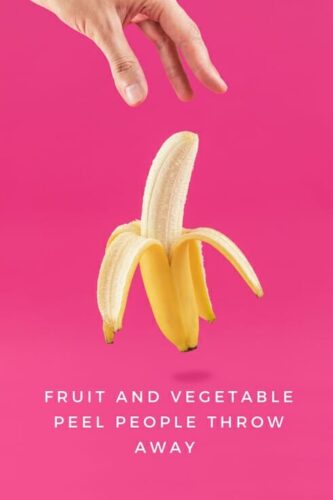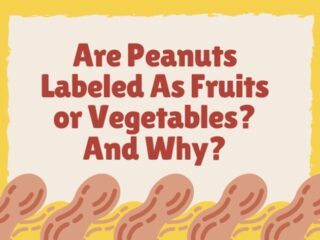There is plenty of eatable fruit and vegetable peel people throw away on a daily basis and are unaware of the benefits and nutritious taste they have.
People oftentimes throw away parts of some fruits and vegetables that are not only edible but also very tasty and good for you.
There are lots of different ways peels from fruits and vegetables can be reused.
For example, most gardeners and farmers use peelings as organic matter to boost the soil nutrient level in their farmland or garden instead of using fertilizer.
Most fruit and vegetables Peels people throw away that come to mind are potato peels, tomato peels, apple peels, cucumber peels, or broccoli steam. People throw them away unaware of their benefits.
For example, if you only eat the heads of the broccoli and cauliflower plant, you are wasting some of the best parts of the fruit.
The tough outer part of the stems from broccoli can be removed to reveal a tender and tasty treat when boiled, and the leaves of cauliflower are good in salads, soups, and sandwiches.
Some people throw away the top peelings of green onions, which is a shame. Carrot tops are great when cooked in soup or stew, meatloaf, and many more dishes.
Beet and turnip top peels are awesome greens that can be eaten raw or cooked. The Radish plant leaves taste great when cooked greens. Normally, they are used in soup for spice and extra nutrition.
The cabbage vegetable core is a treat and tastes great eaten raw or cooked. This is, however, for people who have the stomach to eat some vegetables raw.

Eatable Fruit And Vegetables
Eatable Fruit And Vegetable Peel People Throw Away
One of the fruit and vegetable peels people throw away is the thick stalk that runs through the middle of the broccoli plant. That part of the broccoli is normally thrown away by many people.
Most vegetables in their entirety are edible to some degree, and most of the time, the peels are the parts that have the most nutritional value needed by your body.
Another vegetable people tend to throw away is carrot skins or peels. The peels that are usually left behind in the juicer can go into cakes, be eaten raw, or be mixed with the same carrot juice.
Broccoli can be steamed with the stalk cut up into dice or circles and then put in a pan to simmer down for a few extra minutes with coconut oil or olive oil. Salt and pepper can be added as well, but that is optional.
People commonly throw away the skin (peels) and seeds of fruits and vegetables regularly on a daily basis.
It may be okay to throw the skin and seeds of some fruits, such as pineapples, raw bananas, and so on, away. However, for many people, the skins and seeds are indeed edible and nutritious.

Eatable Fruit And Vegetable
Fruit And Vegetable Peels Usage Seed Benefits
- Banana skin is edible and packed with a lot of nutrients. The apple fruit skin is edible and tasty; however, some people would rather peel the skin off. Citrus fruits, such as orange peels, provide Vitamin C; they can be pickled and eaten as marmalade, used to boil tea, and used in cakes.
- Seeds from different variations of fruits, such as watermelon, avocado, papaya, pears, and jackfruit, have the potential to lower cholesterol levels in the body. They provide proteins and ease bowel issues as well; not only that, these fruit seeds regulate blood pressure levels.
What to Do With Fruit and Vegetable Peels?
There are plenty of things you can do with fruit and vegetable peels if you have no intention of consuming them. The first thing is to use the vegetable and fruit peels as organic fertilizer.
Most gardeners love to use the peelings from their fruits and vegetables as nutrients around the roots of plants in their garden. Over time, the peels will break down into natural organic matter that supplies the plant with rich nutrients to boost its growth.
Another thing you can use fruit and vegetable peels to do is boost the nutrient level in your soil if it is too low. Most plants require lots of nutrients in the soil to grow.
While tossing out your peels, you can mix the peels in your soil and let them decompose for a few weeks, and your soil will have rich nutrients for plant and crop growth. This method is mostly used for raised beds and for compost-starting cell mixtures.
The fruit and vegetable peels people throw away all the time have their purpose, and you should capitalize on their usage to get more nutrition for your body and to get more out of your garden as well.
Waste nothing; just throw your peels in the garden or add them to your soup or salad mix!




